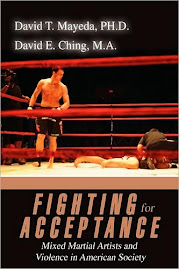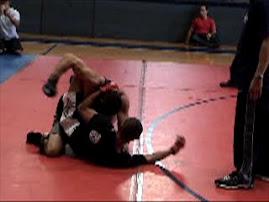One of the things I've noticed among the expert discourse on National Public Radio is discussion of bystander apathy, noting the classic and tragic 1964 homicide of Kitty Genovese who was killed as bystanders diffused their personal responsibility to do anything, including calling the authorities. What has not been discussed is how a violent and misogynistic masculinity plays into these types of male-driven assaults.
In fact, it took a caller on this podcast (go to about 26 minutes into the podcast) to point this out. But even then, the expert panelist responds to the caller by swaying away from the gendered nature of this alleged crime, focusing instead on her personal interests of bystanders "freezing" while watching abusive behavior.
Within the literature on masculinity, a number of scholars have theorized group assaults of males on females and males on other males, specifically noting how these group assaults are a male-based bonding mechanism, enacted as a form of violent participatory theater for the perpetrators. Michael Messner and Jeff Benedict (see Public Heroes, Private Felons) have written a great deal on this issue as it relates to male athletes.
From Messner's Taking the Field: Women, Men and Sports:
...the dynamic underlying gang rapes is a statement of group-based male power, expressed through a dual process of misogynist denigration of women and erotic bonding among men, and this process has its roots in the erotic bonding of the misogynist joking culture of athletic teams. (p. 40).
However, this violent, misogynistic dynamic is not limited to the sporting world. In multiple arenas where heterosexual males form bachelor societies (e.g., fraternities, military units, prisons, sports teams), extreme forms of gendered violence are more likely to develop. Karen Franklin's excellent article titled "Enacting Masculinity: Antigay Violence and Group Rape
as Participatory Theater," published in Sexuality Research & Social Policy speaks to this phenomenon. Her article dissects the case of a 2003 Long Island, New York high school football team (graphic language):
According to a subsequent Grand Jury investigation report (Pingel, 2004), the assaults began on the first night of camp, when one of the young victims was taped to his bed. The boy was then forced to go to an adjoining cabin and put powder and gel in the hair of another underclassman. The next day, two assailants held down a boy while a third assailant sodomized him with a broomstick. This was done in front of other players, who laughed and joked about it. The broomstick assault was repeated the day after that. This time, the assailants applied duct tape to the victim’s pubic area, buttocks, legs, and eyebrows, inflicting severe pain by pulling off the hair on these parts of his body. Again, other players witnessed the assault. (p. 30).
To understand these public and gendered assaults inflicted upon females and males, Franklin offers the following explanation:
Participants in antigay assaults and group rapes usually recall feeling positive emotions at the time. During the assault, there is a drug-like high produced by the excitement and danger. Afterwards, there is a feeling of closeness and camaraderie, a sense of bonding produced by communal transgression. But there may also be an enormous, collective sigh of relief, in that they have survived this public test with their masculinity intact.
In other words, underneath the experienced veneer of camaraderie and warmth is a desperate struggle to achieve dominance, maintain status, or even to get through the ordeal with one’s masculinity intact. This competition for status or survival is not directly acknowledged. Rather, it is camouflaged by the ostensible goal of debasing a weaker, more feminine outsider.
There is more to Franklin's thesis than what is provided above (the entire article is worth a close read). However, in applying Messner's and Franklin's theoretical approach to the Richmond, CA case, if we can assume (1) all the alleged perpetrators were male and (2) all or most of the bystanders were male, then the collective assault was made possible by objectifying the victim so that she became an object used to help the boys/men bond.
In other words, the mainstream media is once again missing it. Although diffused responsibility is present in the Richmond, CA case and similar cases, that analysis alone is markedly incomplete. These examples of sexualized violence speak to the ongoing crisis in masculinity that permeates our world. As long as males build a sense of hegemonic masculinity through the debasement of women and other males, we will continue to have these types of sexual assaults perpetrated in the form of mass war crimes, small group and individualized assaults.
Additional NPR coverage:





















